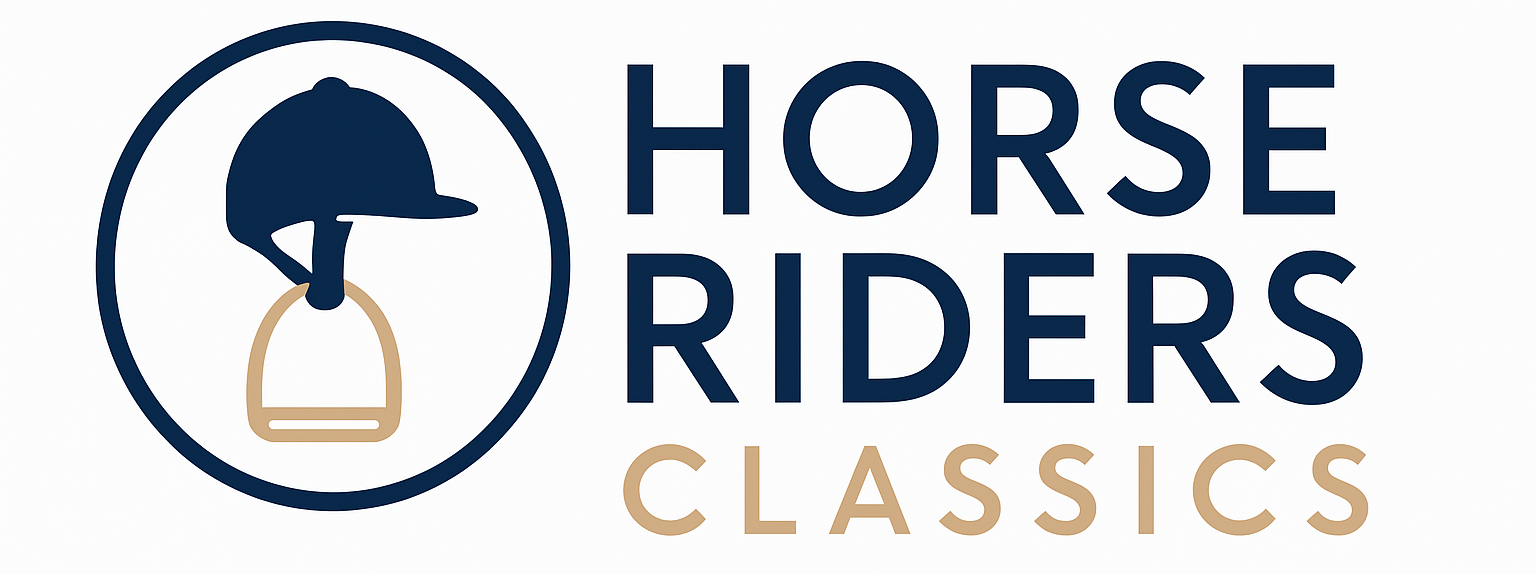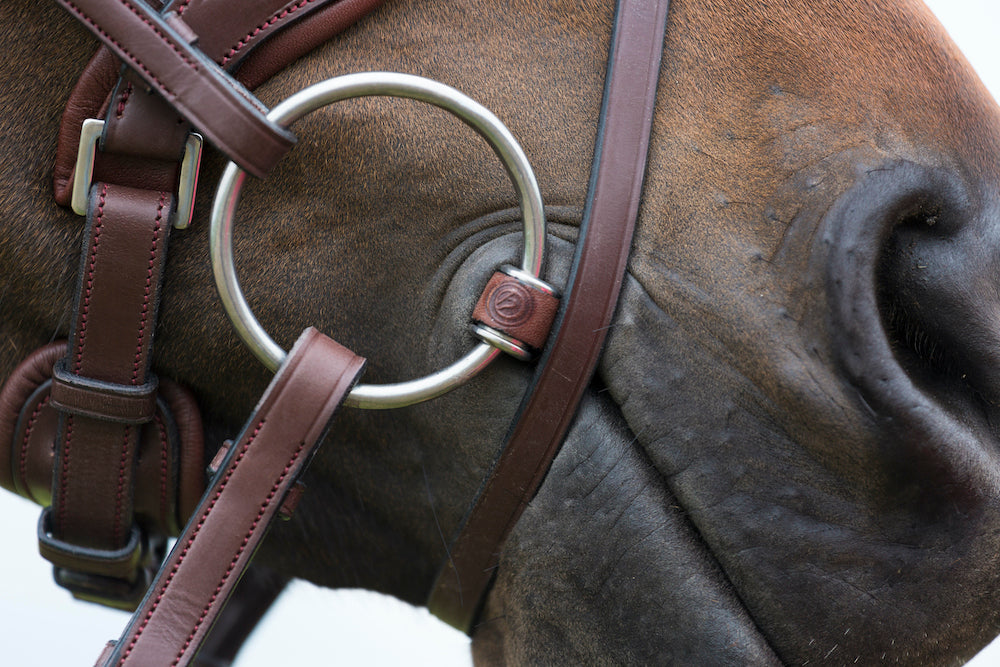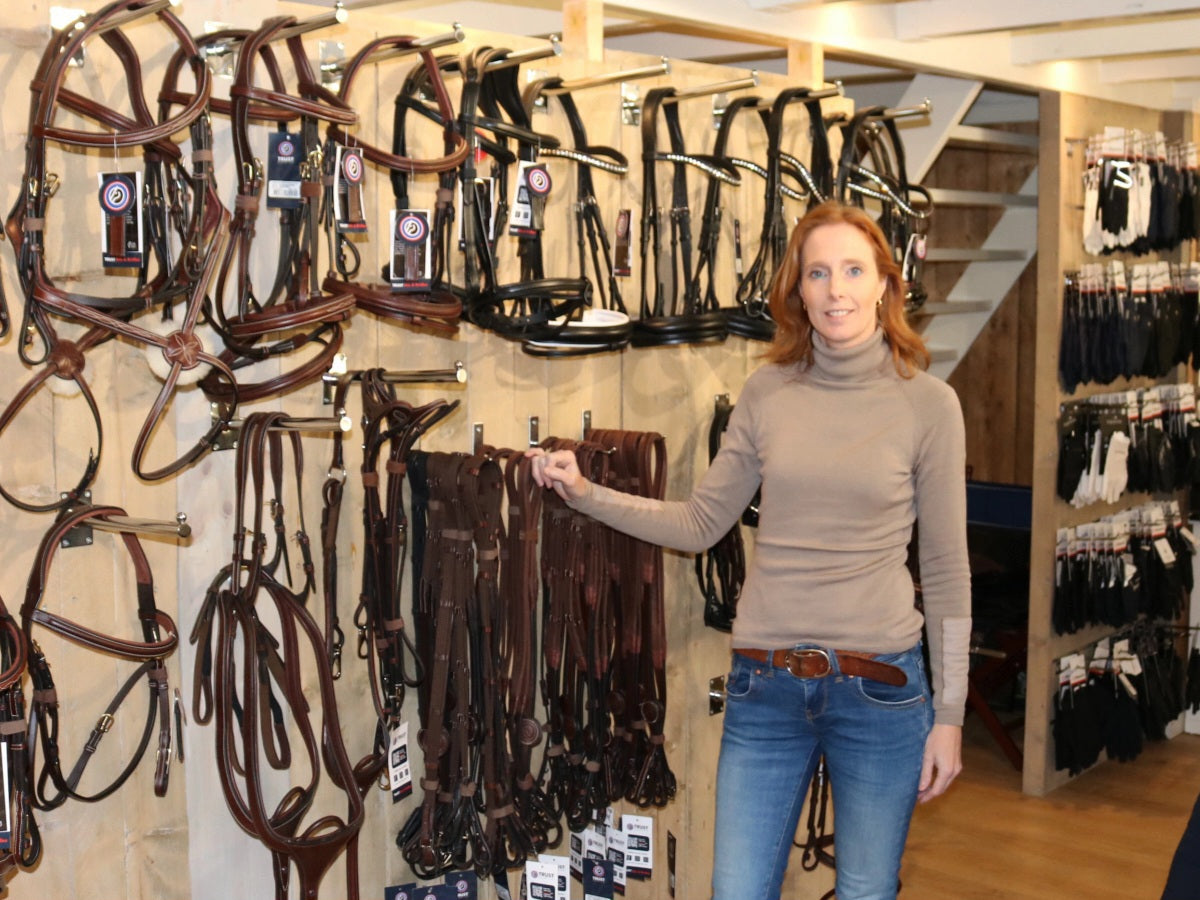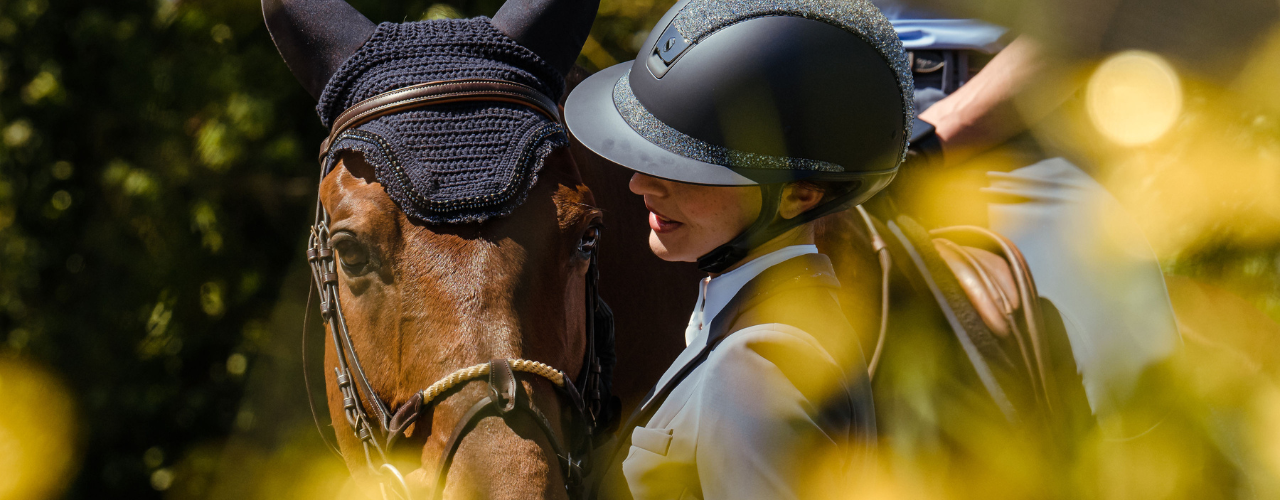We often get questions about which bit is most suitable for a horse. In this article we would like to explain a bit more about the most commonly used bits: the water snaffle, bust snaffle and D snaffle bit. These bits have the most friendly effect on your horse and most horses run fine on one of these variants. But which one works more sharply and which one do you use with an inexperienced horse? In this article we would like to explain the difference between these popular snaffle bits.
What is a snaffle?
Let's start at the beginning: a snaffle bit is a type of horse bit. It usually has round or D-shaped rings at the ends, to which the reins can be attached. The mouthpiece acts on the horse's mouth without lever. However, different snaffle bits also have different ways of applying pressure to the horse.
 An example of a snaffle (in this case a chest snaffle)
An example of a snaffle (in this case a chest snaffle)
Pressure Points: Cheek, Curb and Poll
It is important to understand the different pressure points so that you also understand the effect of a bit or snaffle better. We distinguish between different pressure points:
- Press the Cheek (the jaw). This pressure point helps to train, steer and steer your horse.
- Press the Curb (under the chin). This pressure point provides extra control and helps to pull in the chin. Pressure from, for example, a chin chain on this area acts sharply, but is softened by distributing the pressure over the jaw and behind the ears. In addition, a nylon chinstrap or a very softly padded chain softens the action on this area while still encouraging retraction of the chin.
- Press the Poll (behind the ears). The pressure on this spot depends on the length of the section at the top of the mouthpiece. If you look at the bit from the side, it's about the length from everything you see above the mouthpiece to where it attaches to the bridle. With a lifting snaffle this pressure is therefore much sharper than with an ordinary snaffle bit. A horse that accepts this form of pressure will lower its head. This so-called 'Poll pressure' is also combined with other forms of pressure so that it is not exerted too violently on a location.
Fixed versus loose rings
There are snaffle bits with fixed and loose rings. For example, a bust snaffle and D snaffle have fixed rings. This means that the rings are fixed to the mouthpiece and cannot rotate. With a water snaffle, the rings can rotate and go vertically through the mouthpiece. Rotating the rings ensures that the pressure on the tongue and layers can be strengthened and relieved faster. In addition, the bit exerts pressure on the jaw and not behind the ears or chin.
Nowadays there are also bits on the market that are a combination of fixed and loose rings. They have the advantage of the solid feel and confinement at the sides, but at the same time do not give pressure behind the ears. In addition, the pressure on the tongue and layers is reduced faster, thus returning the bit to its natural position.
Now that this has all been discussed, we would like to take a brief look at the different snaffle bits.
Bust snaffle
As mentioned earlier, the butt snaffle has fixed rings: they are attached to the mouthpiece and cannot rotate. The bust snaffle is designed in such a way that the rings lie close to the lips and stimulate compliance even better. In addition, fixed rings provide a solid feel to the sides of the head and are also less likely to be pulled through the horse's mouth. Because the rings are attached to the mouthpiece, they both also exert light pressure behind the ears. The bust snaffle is more relaxed in the mouth, limits the horse more and gives pressure on the jaw and behind the ears. A bust snaffle gives slightly less pressure behind the ears compared to a D snaffle bit. View our busts here.

A bust snaffle
D snaffle
The D-snaffle has many similarities with the bust snaffle. The biggest difference is that a D-snaffle gives a little more pressure behind the ears compared to a chest snaffle. This is because the part above the mouthpiece is longer than with a bust snaffle. In general, this snaffle bit corresponds to the bust snaffle: it has fixed rings and is designed in such a way that the rings lie close to the lips and stimulate compliance even better. In addition, the fixed rings give a solid feel to the sides of the head. The rings are also not pulled through the horse's mouth as quickly. The D snaffle lies calmly in the mouth, limits the horse more and gives pressure on the jaw and behind the ears. View our D snaffle bits here.

A D snaffle
Ring snaffle
This snaffle has loose rings. That means they can rotate and go vertically through the mouthpiece. By turning, the pressure on the tongue and the layers can be strengthened and relieved faster. The bit puts pressure on the jaw and not behind the ears or on the chin. The ring snaffle is looser in the mouth and can also be pulled through the mouth more quickly. It is important that a ring snaffle should always be 5 cm larger to prevent your horse's skin from getting between the bit and the rings and causing wounds. View our snaffle bits here.

A water snaffle
What is the best snaffle bit for your horse?
When we link the above characteristics back to the different shapes of bits, you see that a water ring with loose rings only gives pressure on the jaw, is looser in the mouth and can also be pulled through the mouth more quickly. The bust snaffle and D snaffle are more relaxed in the mouth, delimit the horse more and give pressure on the jaw and behind the ears. A D-snaffle gives slightly more pressure behind the ears compared to a chest snaffle. This is because the part above the mouthpiece is longer than with a bust snaffle. Both bits give a somewhat more even pressure on the tongue that is reduced more slowly. The table shows the differences in pressure.
|
Cheek |
Curb |
Poll |
Ring snaffle |
|
|
|
Bust snaffle |
|
|
|
D snaffle |
|
|
|
The best choice for your horse therefore depends on what your horse needs and of course also your own experience. Usually a young and inexperienced horse will be easier to steer with a bust snaffle or D snaffle bit and it is quieter in the mouth. But a horse that is light in the lead will normally walk more comfortably on a water snaffle where he experiences as little pressure as possible. How nice it would be to find the perfect bit in one go, often depends on the mouthpiece itself, the rest of the brim, but your own experience and muscle power also play a role.
Do you want to know more about mouthpieces, such as the single-jointed and double-jointed mouthpieces? Then read our blog: What is the best mouthpiece for my horse?
Free bit advice
We include all these points in our bit advice. We are happy to help you make the right choice. And because this still may not be the right choice despite everything we go through with you, you can try a lot of bits with us for 14 days. We deliberately keep this period so long because a horse can give a fantastic feeling on day 1, but this can be gone after a few days. The other way around is also possible. Your horse often has to get used to itself and this can help to ride with the same bit for a little longer. And if you don't like the bit, you only pay € 12.50 for using it. You can read more about this on our try & buy page.







